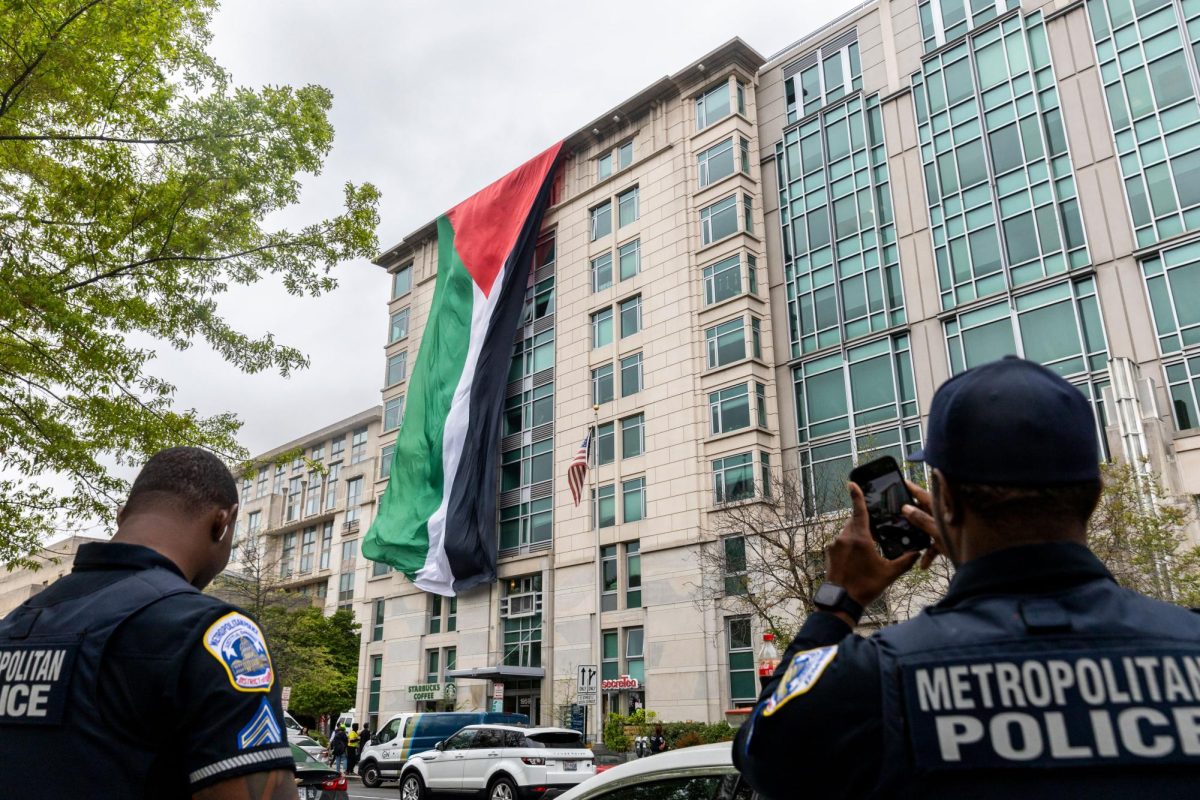A history professor discussed George Washington’s legacy and connection to the University Tuesday.
Denver Brunsman, an associate professor and the associate vice chair of the history department, detailed George Washington’s personal character, life as a slave owner and vision for a national university. The GW Alumni Association hosted the event titled, “Legacies of George Washington: a Conversation with Dr. Denver Brunsman, Associate Professor of History.”
In case you missed it, here are some main takeaways from the event:
Washington’s personal behavior
Brunsman said the painting “General George Washington Resigning His Commission” by John Trumbull made Washington “world famous,” depicting him ceding his command as general of the Continental Army in 1783 at the end of the Revolutionary War.
“When Washington gave up power at the end of the Revolutionary War, his enemy of the time – King George III in Great Britain – said, ‘If Washington has done this, he will be the greatest man in the world,’” Brunsman said.
Brunsman said John Adams, Washington’s vice president at the time, described him as tall, handsome and smart and someone with a “gift of silence” who never deceived anyone when others had.
Brunsman said another painting called “Parson Weems’ Fable” by Grant Wood depicts Washington pulling back a curtain to look at the cherry trees outside. He said the painting represented Washington’s character in the eyes of the American people because it showed how they trusted him.
“They trusted him,” he said. “He had shown that he could give up power, and it was something that was known at the time. And Washington was someone who really absorbed all the moral teaching of his time.”
Ties to slavery
Brunsman said Washington’s ties to slavery were the “biggest stain” on his character, enslaving 123 women and children by the time of his death in 1799.
“So that is to say that they were human, they were people,” he said. “And I think this is what troubles [people] so much about these institutions and troubled Washington.”
Brunsman said Washington was a “normal” slaveholder up until the Revolutionary War, which changed his view of slavery as part of the nation’s institutions.
“He turned privately against it, and that was for a number of reasons,” he said. “One is that he saw the heroism of African Americans in battle.”
Brunsman said Washington’s views changed because he traveled up North during the war and spent time in New York. He said Washington vowed against purchasing or selling any more slaves after his close advisers told him about the wrongs of slavery.
“He had Marquis De Lafayette, John Lawrence, [Alexander] Hamilton telling him how wrong slavery was,” he said. “So by the end of the revolution, Washinton committed himself to not buy or sell any more people.”
Connections to GW
Brunsman said Washington envisioned a national university, which highlighted his early advocating for American students to stay away from “provincialism,” attachment to their local communities as opposed to the whole country.
“He was really a visionary in terms of experiential education,” he said. “He wanted students to be able to do things like watch sessions of Congress in between formal schooling on campus.”
Burnsman said Lafayette, one of Washington’s close advisers, attended the first graduation of Columbian College – the University’s original name – in 1824. He said GW’s emphasis on internship opportunities defines this part of Washington’s legacy.
“Other universities claim that the mantle of the national university,” he said. “I think GWU has the strongest of those claims.”







